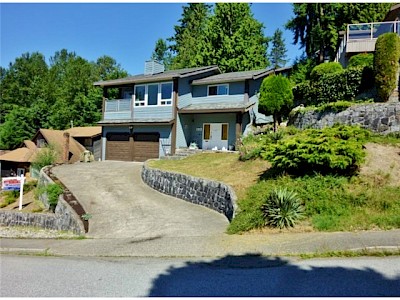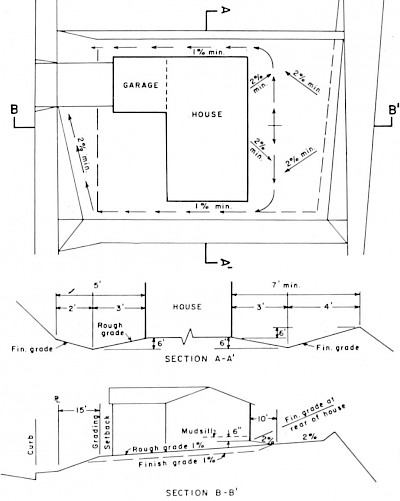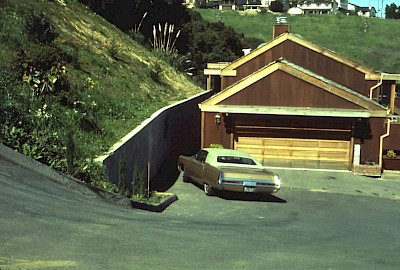That's just swale - how to prevent water problems in your hilly Coquitlam, White Rock, or Surrey property
Do you know the most common problem I see in houses that I inspect in Surrey, Langley, North Delta, and especially parts of White Rock?
And I have to agree on one thing first. I love houses on hills. They often provide a view, or a level of privacy that houses on flat topographical areas do not.So, have you guessed it yet? It’s not what you think. It’s not foundations, or plumbing or electrical. In fact, it’s something outside of the home.
Due in a large part to the topographical nature of the Lower Mainland, where there are hills and areas that aren’t level - where front yards may slope down, but the back yard is on a hill, (or the opposite situation on the other side of the street, where the front yard curves down to the house, and the back yard also curves down — these houses which are common in the White Rock hills, or Sunshine Hills, in North Delta, or Willoughby in Langley, or even my own home in Surrey.
Landscaping and grading is not just for a beautiful appearance around your home, but is also needed to keep basements and crawlspaces dry and prevent structural movement. There are several items to consider when discussing landscaping and grading — but what I’m talking about primarily are the requirements and positive effects of grading.
We recommend altering the soil level or concrete near the foundation to provide drainage away from the house for at least five feet. This is a fundamental building principle and should be given top priority, as all exterior surfaces should slope away from the house. Failure to remedy these conditions may lead to water entry and damage in the basement or crawlspace under the house or settlement of the foundation.
If we have a light rain — and face it - we’re in a rainforest here, so light rains are almost an everyday occurrence — the soil soaks up the moisture and there is rarely an issue, but when we have a good downpour or even simply a steady rain when the ground is already saturated, the water is going to flow somewhere. A proper grade will allow the water to flow away from the home and foundation. A negative grade allows the moisture to flow back towards the home and seep into the soil. The more rain and the more saturated the soil is to begin with, the more of a pressure this moisture puts on the foundation forcing itself through the foundation and into the basement/ crawlspace. Drain tiles, damp proofing coatings, etc, will all help prevent to keep basements and crawlspaces dry, but the key is to keep the moisture away in the first place. Proper grading will accomplish that objective.
When moisture does get into the basement/crawlspace, it can be a real nuisance. Damage can occur to storage, carpeting, and possible structural components. Home owners also hate the cleanup from excessive water. In a crawlspace moisture can be very damaging. Rot and deterioration of floor joists, sill plates, box sills, rim joist, girders can all be can all be bi-products of improper grading and moisture penetration. While proper crawlspace venting help to eliminate high moisture content, venting alone may not be enough if the moisture levels are too high. Making sure that you have a 6”-8” clearance from the soil to the siding and/or rim joist is also important to prevent structural damage. When the soil around your home is saturated, a lateral pressure can also be applied to your foundation walls. This pressure can cause the walls to move and cause failure to the structural integrity of the foundation.
Grading is something that many home owners can overlook, take for granted or simply underestimate the importance.
What’s a poor White Rock homeowner to do? Think about swale grading. As with general grading, a swale should be sloped at 2%. This means that although water pitches to the swale, the swale itself must be sloped too, otherwise it will just sit there. Place a yard drain at the bottom of the swale and connect it to a french drain pipe running away from the low area. Dig a trench and make sure your french drain pipe is sloping at least 2 inches per foot.
This is generally where hiring a landscaping or drainage professional in the end can save you thousands of dollars. It’s also the type of thing that a home inspector looks for before he even opens the front door.




